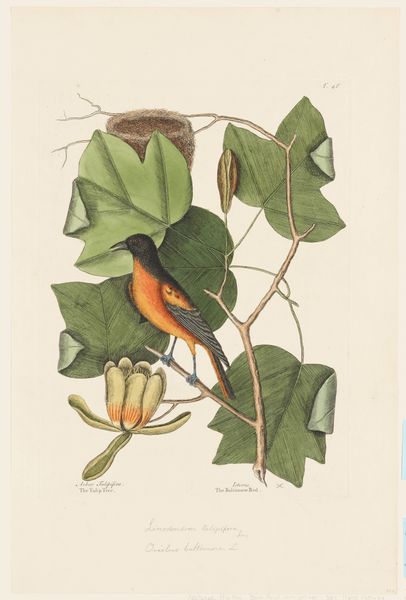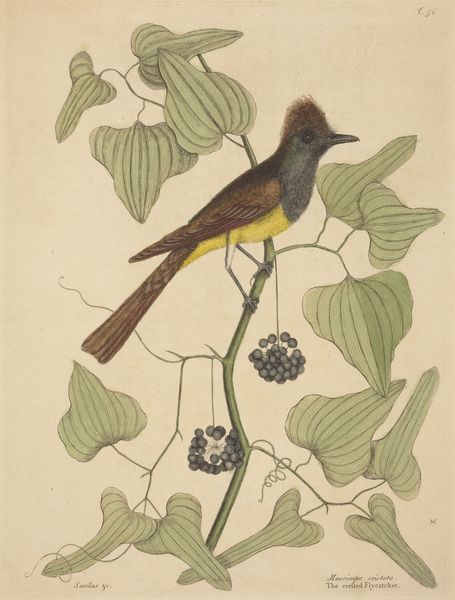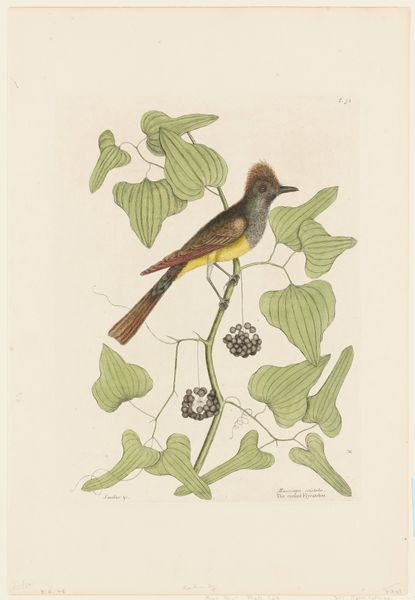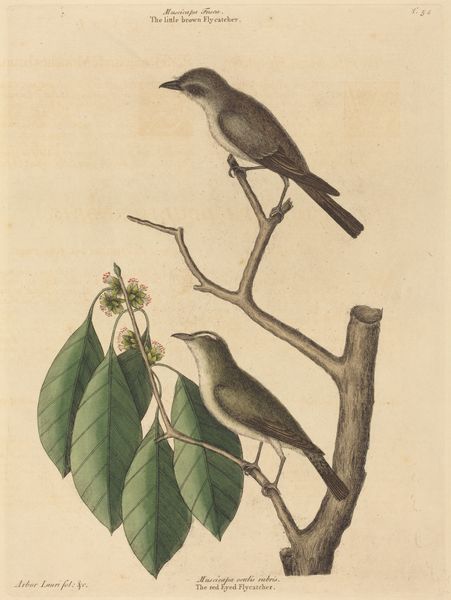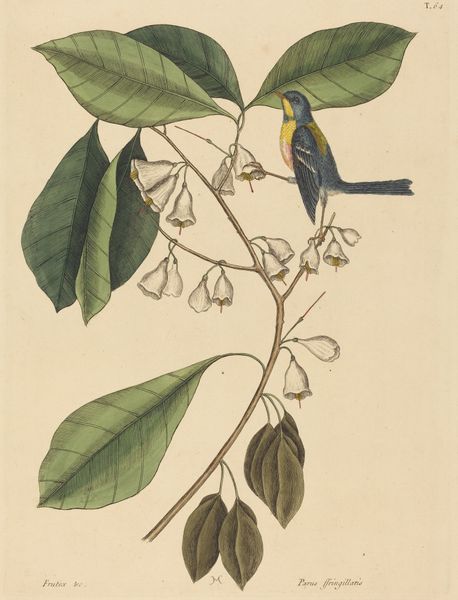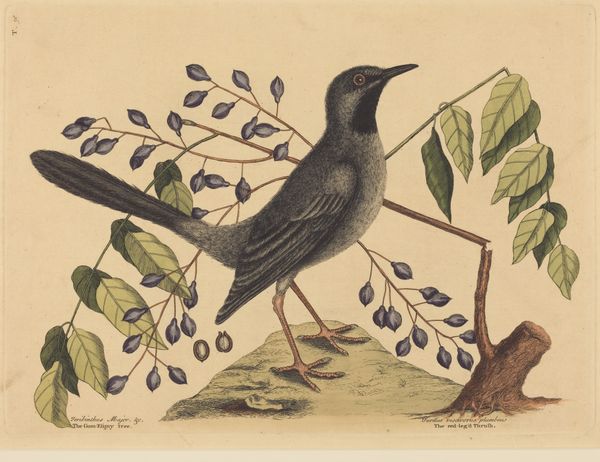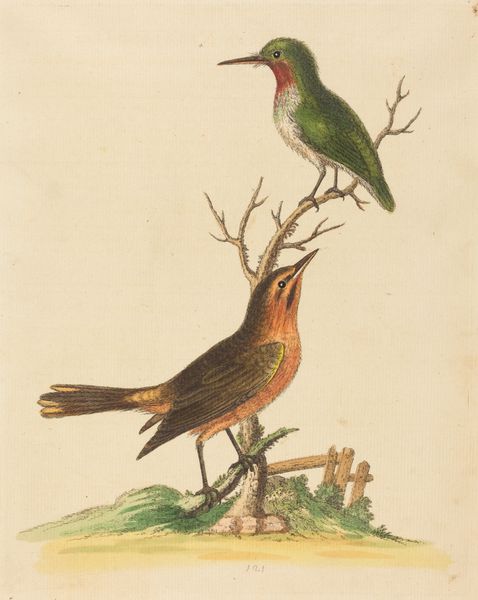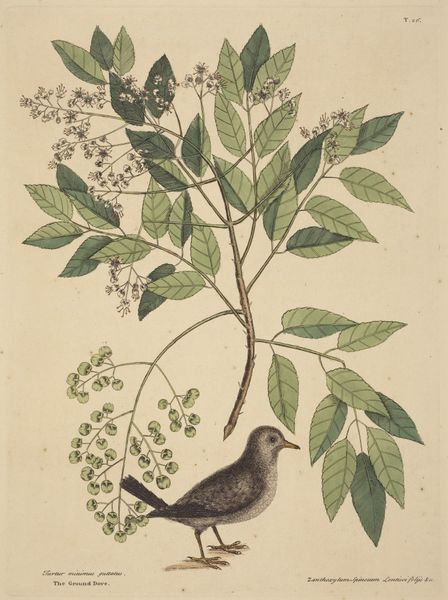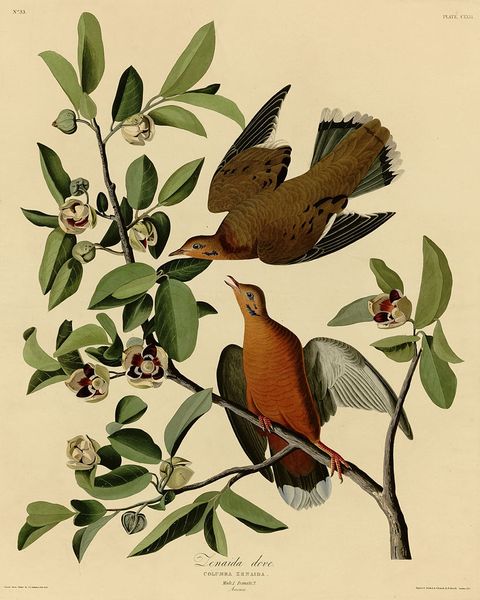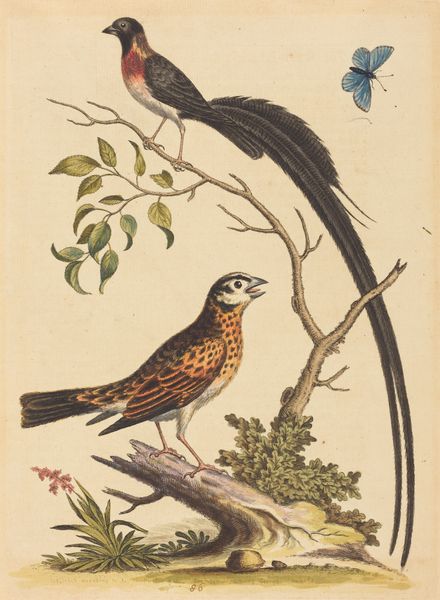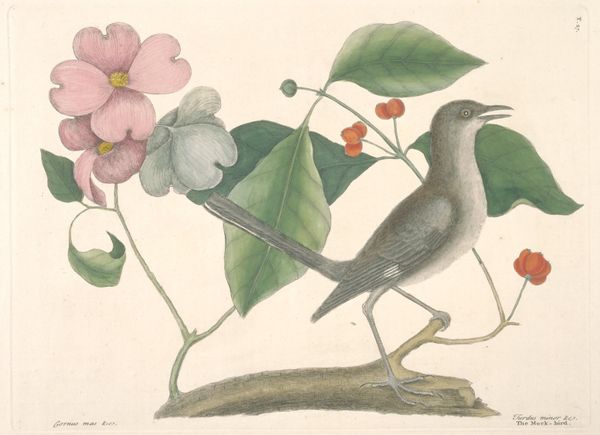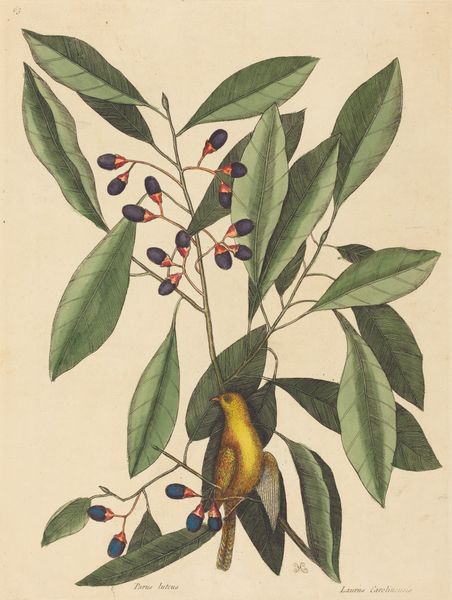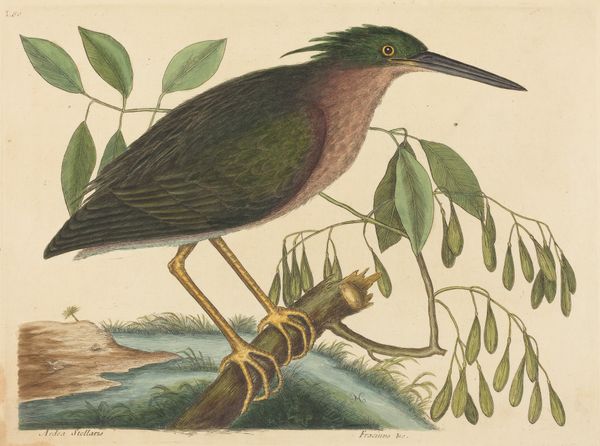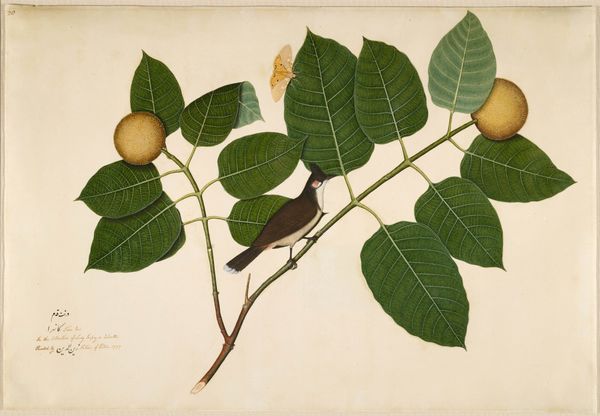
print, etching, paper, watercolor
#
portrait
#
toned paper
# print
#
etching
#
landscape
#
paper
#
oil painting
#
watercolor
#
watercolour illustration
#
naturalism
#
botanical art
#
watercolor
Dimensions: plate: 35.1 x 26.2 cm (13 13/16 x 10 5/16 in.) sheet: 42.5 x 29.2 cm (16 3/4 x 11 1/2 in.)
Copyright: National Gallery of Art: CC0 1.0
Curator: Immediately, I'm drawn to the flatness, the deliberate two-dimensionality of the composition. It’s stylized. Editor: Indeed. What we have here is "The Towhe Bird (Fringilla erythrophthalma)", an etching with watercolor on paper, possibly from 1754, by Mark Catesby. The muted tones evoke a sense of stillness, almost a prelapsarian calm. Curator: Calm, yes, but also consider the stark contrasts. Look at how the artist defines space. The sharp lines against the wash of the watercolor create an almost diagrammatic representation. The negative space is just as crucial as the represented objects. It highlights form over illusion. Editor: Absolutely, and that stylized form speaks to the emerging scientific gaze of the time. Notice how the towhee bird, in its dual presentation, embodies duality. One in striking plumage, a flash of red and black, the other in humble browns. The black bird is named “Towhe Bird”, while the brown is described as a “cow-pen bird”. What do you think the symbolism might be? Curator: It’s fascinating. Perhaps Catesby is intentionally juxtaposing a concept of exotic allure against commonality through their contrasting display and representation. One striking bird with beautiful coloration that captures immediate attention and one which is dull in color. Perhaps the intention is to signify two elements found together. Editor: Precisely. The foliage, rendered with painstaking accuracy, forms a stage, framing the birds and enhancing their symbolic weight. They’re creatures of the New World, catalogued and displayed. Also, the heart shaped leaves behind the birds could hold significance, particularly in an emerging era of enlightenment which saw heart symbolism evolving and reinterpreted away from religious roots, with new significance in biological contexts. Curator: Note too how the composition guides the eye, how Catesby meticulously arranged the visual elements and how the strategic placement reinforces structure in the work, achieving equilibrium while using tonal balance. Editor: So true. Considering it together, the image becomes a rich tapestry of science and nascent awareness. Curator: Agreed. A captivating specimen of the Age of Exploration’s visual language. Editor: A testament to the enduring power of symbols and how we weave meaning into the world around us.
Comments
No comments
Be the first to comment and join the conversation on the ultimate creative platform.
